
Critically acclaimed movies tend to bunch up near the end of the year, as distributors jockey for Oscar momentum. And 2012 certainly has plenty of upcoming films we’re excited about—Jeff Nichols’ Mud, Josh Radnor’s Liberal Arts, Steven Spielberg’s Lincoln, PT Anderson’s The Master, Ang Lee’s Life of Pi, Tom Hooper’s Les Miserables, and Peter Jackson’s The Hobbit, to name just a few. Oh, and Christopher Nolan has some kind of small superhero movie coming out in a couple of weeks. But 2012 has also blessed us with an unusually large number of notable films in its first six months. It’s a development we whole-heartedly support. Here are our favorites, from a lush documentary about sushi to a completely new kind of horror film, from a tiny Belgian character study to a superhero blockbuster. Here are the 25 Best Movies of 2012, released between January and June.
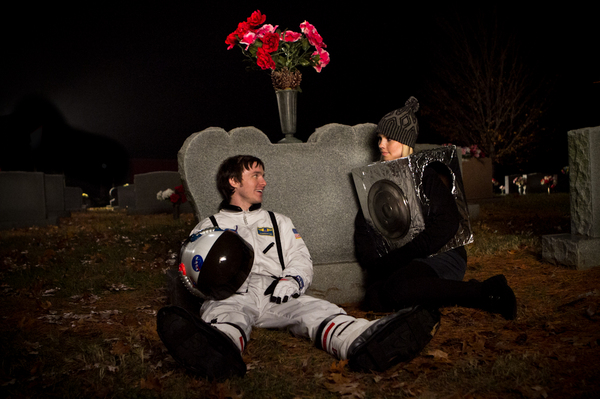
25. Blue Like Jazz
Blue Like Jazz follows young Donald Miller (Marshall Allman) in a tale of coming of age and crisis of faith, as he breaks free from his fundamentalist Christian life in Texas to explore the larger world via Portland, Ore. Donald works hard to separate himself from his past. He turns down the Bible college he was planning to attend and rebels by enrolling at Reed University. At this notoriously God-less school, he seeks freedom in booze, drugs, activism and some PG-rated hedonism. He struggles to fit into a world that is suddenly much bigger and scarier than he’d managed- all the while he grappling with the guilt of his background and faith. Led by the superb Allman, the cast shines. Allman’s Donald somehow maintains a boyish charm even as he grows more cynical and lost. As social activist Penny, Claire Holt deftly juggles both genuine optimism and self-importance as the girl who is always out saving the world while everyone else nurses hangovers. Tania Raymonde’s performance as Lauryn, Donald’s lesbian best friend, manages to be both caustic yet somehow warm. This adaption of Miller’s essays is as entertaining and exuberant as one could possibly desire in a coming-of-age story. But director/writer Steve Taylor, co-writer Ben Pearson and Donald Miller are fully aware of the reputation Christianity has in contemporary America, and they neither deny or shy away from it. As a result, Blue Like Jazz deserves a serious look from audiences outside its target demographic. —Clay Steakley

24. Sound of Noise
In the Swedish film Sound of Noise, directed by Ola Simonsson and Johannes Stjärne Nilsson, six rogue, experimental musicians coordinate four guerilla performances throughout their city in an attempt to free its inhabitants from the stodgy tyranny of classical music. These six drummers perform avant-garde movements from their revolutionary score, “Music for One City and Six Drummers”, in different locations utilizing everyday objects—a heart monitor, a shredding machine and even power lines, for example—in order to create a musical performance like no other. The film takes a whimsical and youthful approach to storytelling while also presenting a totally original idea. Though the stories focus on a single string of events and a small group of individuals, as a whole they are able to delve into and aptly dissect hugely abstract ideas such as art, personal expression, and family dynamics without reducing them into trite aphorisms or belittling their complexity. Sound of Noise is a delight from start to finish. —Emily Kirkpatrick
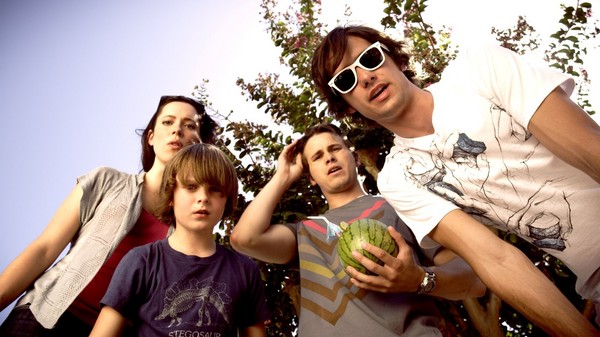
23. A Bag of Hammers
A Bag of Hammers is like the funny guy at parties. He’s not perfect, maybe a bit of a lush and flabby around the middle, but you love having him around. The feature debut from Director Brian Crano follows two cheeky criminals as they steal cars from funeral goers. Ben (Jason Ritter) and Alan (Jake Sandvig) are best friends and felons, sharing the wit and maturity of teenagers as well as a mysteriously dark past. When an out-of-town woman and her son rent the house next door, the young men find themselves quickly drawn into a wholly different sense of morality as it becomes clear that the 12-year-old boy, Kelsey (Chandler Canterbury), is being badly neglected by his high-strung mother, Lynette (Carrie Preston). At first, the friends try not to be concerned and shrug it off as “none of our business.” It’s not long, however, before Kelsey becomes their business, and they have to become role models overnight. A Bag of Hammers is well shot and well acted. There are truly brilliant scenes that occur through out the film—watch for a particular hard-hitting monologue from Ritter to Chandler Canterbury’s Kelsey in the diner about two-thirds of the way in—and these are what give the film its shine. —Maryann Koopman Kelly

22. The Intouchables
Based on a real-life relationship, the odd couple of this film is composed of Philippe (François Cluzet), a millionaire paralyzed in a paragliding accident, and Driss (César-winning Omar Sy), a street hood by way of Senegal. White, black; rich, poor; immobile and extremely animated—Philippe and Driss are opposite in nearly every way. Their paths would never even cross were it not for the paperwork Driss needs signed to show he’s looking for work in order to qualify for state assistance. Tired of waiting to interview for a job he surely won’t get, he storms into Philippe’s office and slaps the form on his desk. Unable to move from the neck down, Philippe of course can’t fill it out, so he asks Driss to return in the morning. Impressed with Driss’ forthrightness and the fact that he actually comes back the next day, Philippe offers him a job. It’s the best thing to happen to both of them. Energetically paced by editor Dorian Rigal-Ansous and scored by Ludovico Einaudi, the immensely enjoyable Intouchables hinges on this central relationship but also broaches social taboos with a politically incorrect wit that flays what’s considered off-limits: socioeconomic disparity, race relations and especially physical disability. The filmmakers aren’t afraid to “go there,” and that they do elevates the sincerely feel-good material to larger cultural relevance. —Annlee Ellingson
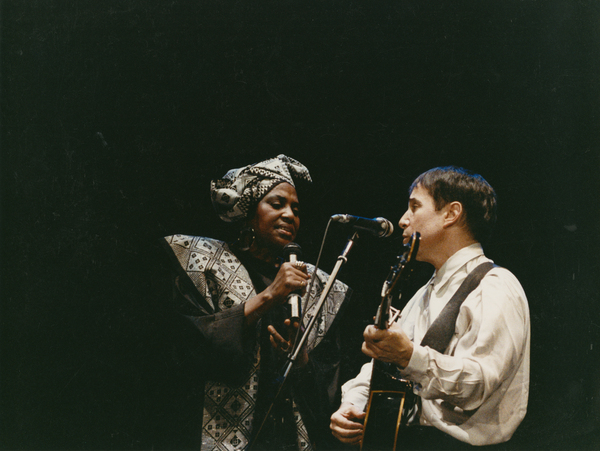
21. Under African Skies
Director Joe Berlinger’s fascinating, immersive documentary Under African Skies celebrates the 25th anniversary of Paul Simon’s landmark Graceland album and also examines the firestorm of controversy that it ignited. In 1985, Paul Simon traveled to Johannesburg, South Africa, to meet and record with the black South African musicians who had become a kind of inspirational obsession for him. Nine days in South Africa and subsequent sessions in New York and London culminated in the five times Platinum, Grammy-winning cultural touchstone Graceland. While the album’s musical excellence was nearly universally praised, there were accusations that Simon’s pastiche of South African music with his own melodies might be more a case of cultural imperialism than of collaboration. To his credit, Berlinger presents all arguments impartially and leaves the viewer to come to his or her own terms with Simon’s motives and actions. The emotional core of this film, however, is the jubilant, gorgeous music and the musicians who created it. We are presented with electrifying performance footage, both from 1985 and 2011, of Simon and the true center of the Graceland sound—guitarist Ray Phiri, incomparable bassist Baghiti Khumalo, and drummer Isaac Mtshali. What unfolds is remarkable. By film’s finish, when Tambo and Simon embrace, it is evident that, differences aside, at the end we are left with the music. And the music is damn good. —Clay Steakley
We see a lot of movies, most of them bad. So it’s always a joy to remember the good ones, and 2012 has already had plenty—from a documentary about sushi to a new kind of horror film, the latest from a tiny Belgian film to a superhero blockbuster. Here are the 25 Best Movies of 2012, released between January and June.
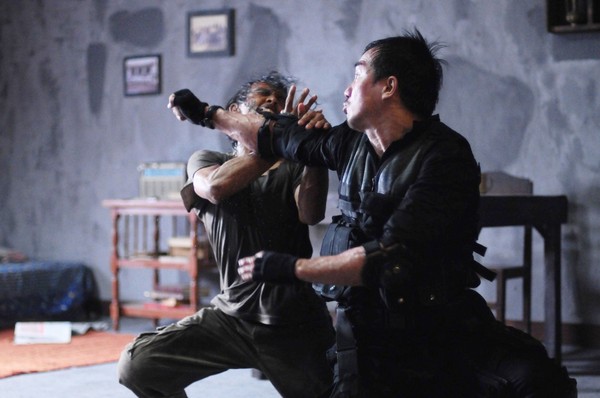
20. The Raid: Redemption
The Raid: Redemption is the type of hyper-violent action film that makes grown men wince (and then chuckle) and their girlfriends and wives wince, roll their eyes (and then wonder what is wrong with men?!) Yes, guys, it’s that good. Directed by Gareth Evans, The Raid: Redemption is the second film by Evans to star Indonesian martial artist Iko Uwais and feature the traditional Indonesian martial art of Pencak silat. The plot is simple. Rookie policeman Rama (Uwais) is part of a 20-man assault squad attempting to stealthily enter an apartment building and arrest the ruthless crime lord who controls it. Things begin to go wrong as soon as the squad makes it too far in to retreat. From there, all hell breaks loose—and stays really, really loose—the rest of the way as Rama tries to survive the waves of gun-toting, machete-wielding and generally inhospitable building inhabitants trying to kill him. The Raid is a study of all the places on a human body one can shoot, stab and punch- and in this “study” the movie leaves its mark. Though its fight sequences are hardly exercises in gritty realism, they nonetheless possess a rawness—a tendency toward fatality—that’s not often seen on the Big Screen. As for flaws, it’s hard to find many in The Raid: Redemption without resorting to a questioning of the value of the genre in general—and the excessive violence in particular. But considered on its own merits and judged by how well Evans and Uwais do what they set out to do, The Raid: Redemption delivers. Besides, there’s really just not much to be said against a film that blows up so many people using a refrigerator. —Michael Burgin
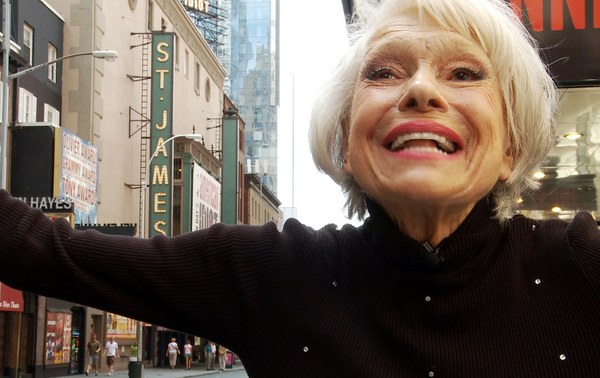
19. Carol Channing: Larger Than Life
Carol Channing is such an endearing, sharp, funny personality that director Dori Berinstein could easily have just thrown her camera on a tripod, have the 90-year-old musical theater legend spin anecdotes for an hour and a half, and had a great documentary. Thankfully, what she made is even better. From Hello, Dolly composer Jerry Herman to Debbie Reynolds to Chita Rivera to a professional Carol Channing impersonator, the film paints an affectionate portrait of a performer who so loves and embodies musical comedy, that if it hadn’t existed before she did, surely her elemental talent would have summoned and created it for her out of pixie dust, brass, feathers, plywood, and of course, diamonds. Channing effortlessly keeps herself off the pedestal of celebrity and draws anyone into her sphere with the congeniality of an old friend. It’s easy to see how everyone from chorus boys to presidents is enamored by her. And then there’s husband Harry Kullijian.The two are ridiculously adorable and clearly overjoyed to be together again after all this time. Tragically, Kullijian passed away in December. All the more luck, then, that we have this small but moving document of the couple so we can share some of their spark for just a little bit. Carol’s childhood sweetheart, reunited in marriage after 70-odd years apart. Carol Channing: Larger than Life is like a warm cinematic hug from Shubert Alley, not to be missed by anyone with even the remotest passing interest in Channing or Broadway history. —Dan Kaufman

18. How To Grow A Band
A good film—and a good band, for that matter—can be much like The Wizard of Oz’s smoke-billowing wizard. If everything goes just right, if the curtain doesn’t get pulled back, then the audience can find itself part of a great and powerful experience. That said, in How To Grow A Band, director Mark Meatto proves that, sometimes, a look behind the curtain can yield just as amazing of an experience. Meatto followed the folk-formal-fusion-but-don’t-you dare-call-it-bluegrass band Punch Brothers for two years: on tour, in studio, on the street, in the living room, in comfort and in flux. The portrait of the band that emerges is clear and precise. We come to know the band so well that the music is comfortingly familiar by film’s end; we come to the know the band members so well that we can hear each individual personality filter through each song. Meatto is careful to give the audience more than concert footage. Instead, he treats the band as a character in and of itself—with its own personality and idiosyncrasies, up days and down days, energy and exhaustion. There’s also commentary by such heavyweights as cellist Yo Yo Ma and John Paul Jones of Led Zeppelin (himself an accomplished mandolin player). How To Grow A Band is evenly paced, seamlessly edited, visually rich and musically exceptional. Meatto reminds us of the gritty truths of touring—we see rehearsals and jam sessions in Thile’s small living room, miles covered by mini-van, tiny dressing rooms stained with graffiti, and the endless details of promotion and marketing. On screen, there is Punch Brothers, the band. The effortless movie-making is simply not apparent—just sit back and enjoy the show. —Joan Radell
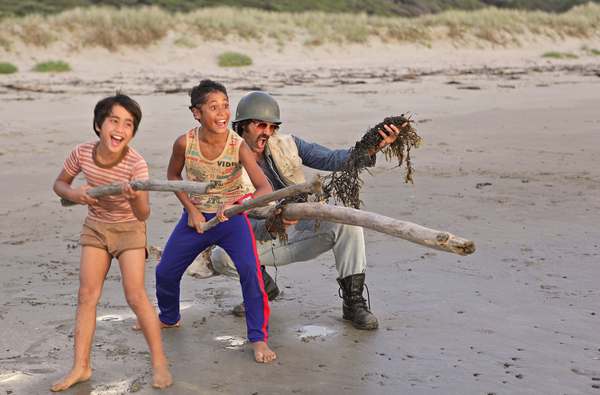
17. Boy
Boy isn’t exactly a comedy, even though it will make you laugh, and it isn’t a feel-good movie. It’s a movie about crushing failure, personal identity, and the possibility of hope as experienced in one M?ori family, circa 1984. Boy opens with an 11-year-old kid (James Rolleston) giving a school report titled “Who Am I?”, his voice speaking over a montage of scenes from his life. It begins with a M?ori greeting: “Kia ora. My name is Boy, and welcome to my interesting world. My favorite person is Michael Jackson. He is the best singer and dancer in the world.” Boy’s report moves from comedy to tenderness as he begins to talk about his own dad, Alamein: “My dad’s not here right now. He’s a busy man…When he comes home, he’s taking me to see Michael Jackson, LIVE. The end.” The students are utterly bored and the teacher is smoking a cigarette out an open window. Soon we also discover the lie of his father’s life—as another student whispers, “Yo man, you’re a liar. You’re dad’s not overseas. He’s in jail for robbery … Same cell block as my dad.” There’s an utterly serious core to Boy that could be missed among all the Michael Jackson references. This is especially evident in the character of Alamein—whose true purpose in returning home, we discover, is not to reconnect with his sons, nor even to visit the grave of his wife, but to dig in a field for stolen money he’s buried. What separates Boy from other movies in its category is its child-centeredness. These kids’ fantasy world, which includes not only Boy’s humorous revisions but Rocky’s belief that he has magical powers and can change reality around him simple by raising his hand and concentrating, creates just the right amount of irony to make the much harsher “real” world believable. The movie’s power lies in how the irony collapses. Increasingly, viewers find themselves seeing the world through the children’s eyes. We suspect it might be more emotionally true than the adult way of looking at the world. At least it’s more hopeful, and that’s exactly what we, like Alamein, need. —Aaron Belz
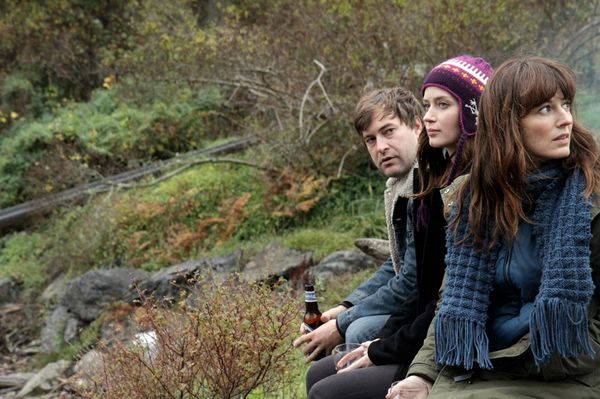
16. Your Sister’s Sister
Improvisation must be alternately liberating and frightening for actors. It certainly can provide fresh results and lead to a realism that is otherwise hard to harness. Alternatively, dialogue can lack polish, and a film’s structure may be too loose and meandering. In the case of Lynn Shelton’s newest, Your Sister’s Sister, the outcome is mixed. The film begins with friends sharing drinks and fondly remembering Tom, a recently deceased buddy. Tom’s brother, Jack (Mark Duplass), ruins the memorial by angrily describing him in an unflattering light. Tom’s ex-girlfriend, Iris (Emily Blunt), pulls Jack aside and proposes he recoup in isolation at her family’s island house. Jack arrives at the secluded destination but discovers an attractive, barely dressed woman. Hannah (Rosemarie DeWitt) is the lesbian sister of Iris, mourning the breakup of a seven-year relationship. Both grieving losses, Jack and Hannah connect on the first night and drink too much, leading to an awkward sexual encounter. Based on this film and her last, Shelton seems interested in exploring jealousy and rivalry, both topics that are rife with possibility. The cast certainly seems to have fun with the material but while their improvisation gives the dialogue life, it also lacks a certain refinement that could’ve come from more time or a single hand.That said, it’s an intimate drama on a scale that few actors the stature of Emily Blunt venture to participate in. It’s a rarity to see a female-centric film in American cinema today, nonetheless a good one. —Will McCord
-thumb-600x400-69319.jpg)
15. Bernie
Let’s talk about Richard Linklater, the man who just doesn’t seem to care what you think. Or, to be more specific, what his critics think. And that’s a good thing. From Slackers, to Dazed and Confused, A Scanner Darkly and Before Sunrise– the pattern in Linklater’s creativity is that there is no pattern. And now he gives us a murder story, in a surprisingly simple but cleverly subtle package. Bernie is as much about the town of Carthage, Texas, as it is about its infamous resident Bernie Tiede (Jack Black), the town’s mortician and prime suspect in the murder of one of the its most despised citizens, Marjorie Nugent (Shirley MacLaine). Unlike Nugent, Bernie is conspicuously loved by all. When he’s not helping direct the high school musical, he’s teaching Sunday school. Black seems to possess an innate restraint that prevents him from slipping too far into caricature with Bernie, who we come to learn is not nearly as complicated as we first suspect. The 78-year-old MacLaine approaches the role of Marjorie with a certain reverence, turning in yet another in a career of great performances. Like a well-played mystery, Linklater’s excellent, darkly humorous (and true) story is interspersed with tantalizing interviews of the community’s residents. Linklater uses real East Texas folks to play the parts, a device that serves as the perfect balance against the drama that leads up to Bernie’s fatal encounter with the rich bitch of a widow. The comedy is sharp with some of the film’s best lines coming from those townsfolk. With Bernie, Linklater once again has proven himself a fearless director who is neither complacent nor formulaic. Since I’m a critic, Linklater himself most likely won’t care what I think. And that’s a very, very good thing. —Tim Basham
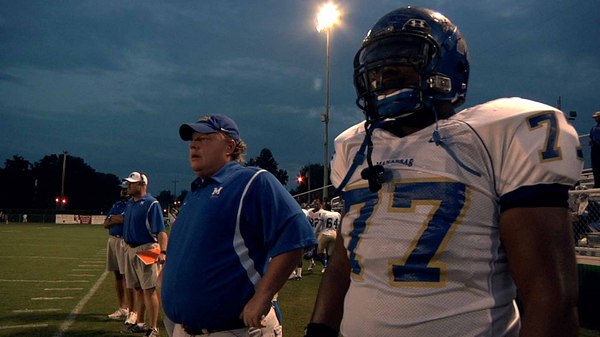
14. Undefeated
Undefeated is such a well-meaning, heart-on-its-sleeve documentary that one feels morally obligated to write words in praise of it. Having scored a 2012 Academy Award win in the Best Documentary category, it’s safe to say that Oscar voters are not in the camp of doubters and naysayers.There is, after all, so much to appreciate in directors Daniel Lindsay and T.J. Martin’s film about a North Memphis high school football coach and his hardscrabble Manassas Tigers’ 2009 miracle season. The documentary vividly profiles each of its four principal subjects: There is the compassionate and voluble coach Bill Courtney, whose commitment to his players borders on saintly; the troubled Chavis, battling anger issues as he seeks to be a mature team leader; the sweet-tempered O.C., blessed with superior talent but struggling with academics in his quest for a scholarship; and “Money,” an honors student and undersized lineman with a never-say-die attitude.
The team’s chance to make its first play-offs in Manassas’ 110-year history that drives the suspense in the film. In introducing us to Courtney, Undefeated finds its voice.One realizes that it’s on the backs of individuals like Courtney that entire communities find their soul, their humanity. —Jay Antani
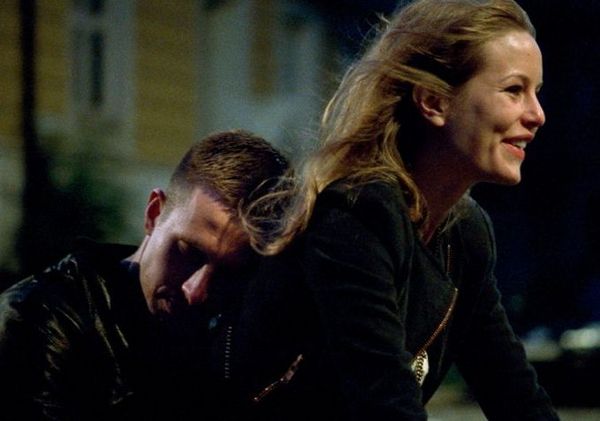
13. Oslo, August 31
Somber, thoughtful, elegiac, Oslo, August 31st asks why life is worth living when it’s been squandered. It’s not as if the main character, Anders (Anders Danielsen Lie), has had the most difficult life. On the contrary, he’s from a well-to-do family and has frittered away his time clubbing and doing drugs. At the age of 34, he’s given a new chance as he’s on the verge of being released from a drug rehabilitation center. He starts on a 24-hour trip that may or may not lead him to accept his lot in life and keep trying. But will the viewer care? Anders struggle with addiction and depression, but he’s far from cinema’s most sympathetic protagonist. Nonetheless, that’s exactly Joachim Trier’s point. The writer/director believes there are worthwhile stories to be told among the privileged (as exemplified by his first film, Reprise), and Oslo, August 31st is not a story meant to elicit sympathy for the economic straits of its main character as much as for his spiritual straits—his regret, his loneliness, his inability to connect with others. Anders Danielsen Lie gives a raw performance, baring a deep sense of melancholy. Thin, pale with sad eyes, he gives the impression of being an apparition. At one point, he sits alone in a coffee shop and listens to bits of conversation around him, merely a fly on the wall. The camera work is elegant and deceptively simple, often imperceptibly dollying forward on these intimate moments.Though the film provides a gentle wash of dark feelings, one can’t help but feel cleansed by it and more alive when it ends. —Will McCord
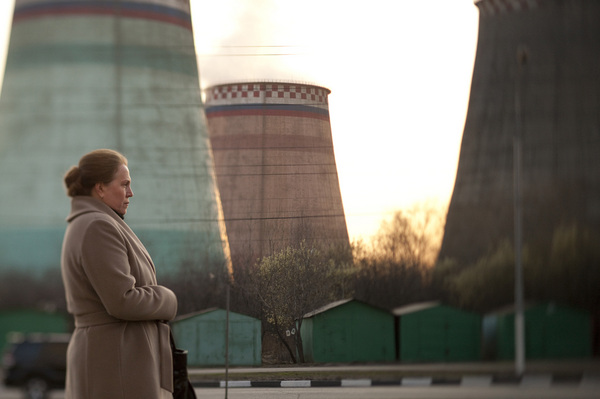
12. Elena
With Elena, director Andrey Zvyagintsev was interested in exploring an uncompromising Darwinian world—as he describes it, “tarantulas in a jar.” It’s a bleak landscape to paint, and he’s done so with only a few characters and a relatively simple story. Set in Moscow, Vladimir (Andrey Smirnov) is a wealthy, retired man living in a modern, sleek apartment. His former nurse, Elena (Nadezhda Markina), is his wife, but she lives in another room with a separate TV and still treats him like a patient. His daughter, Katerina (Yelena Lyadova), is completely estranged but does show up when Vladimir becomes ill and is hospitalized. The event forces Vladimir to confront his mortality and think about writing his will. Elena must also think about her welfare as she faces the prospect of being widowed even as her son’s family struggles with little money. Simple and spare, Elena succeeds in creating a dark world. Vladimir’s apartment is shot beautifully with a cold precision. Smirnov’s portrayal of Vladimir is tough, uncompromising and very believable, as is Elena Lyadova’s depiction of his daughter. —Will McCord
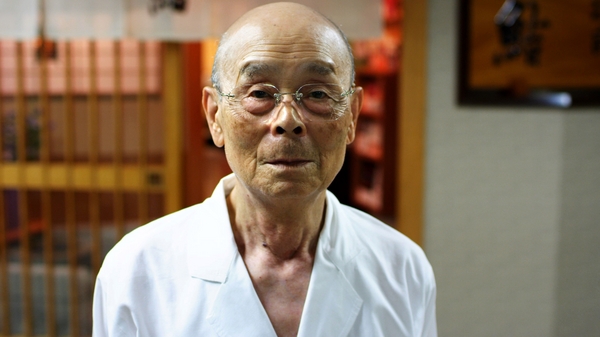
11. Jiro Dreams of Sushi
Directed by David Gelb, Jiro Dreams of Sushi is a documentary about one of the greatest masters of the culinary world, one whom casual foodies have never even heard of. This man is 85-year-old sushi shokunin (Japanese artisan), Jiro Ono, who runs a ten-seat, sushi-only restaurant called Sukiyabashi Jiro located in a Tokyo subway station. He is hailed internationally as an innovator in the art of sushi. A seat in his restaurant must be reserved at least a month in advance and customers pay $300 a person for a prix fixe tasting menu that takes about half an hour to complete. The film’s close ups of the sushi and the shokunin’s hands at work have an incredible clarity and crispness. The music score nicely parallels the repetition, not only in Jiro’s daily life, but also in his dedication to the art of sushi. Every day, from when he was a small boy left to fend for himself at the age of seven, Jiro has strived for a more perfect realization of the sushi he, literally, dreams about at night. Although Jiro’s work is ostensibly the focus of the documentary, the film is really propelled by the story of his relationship with his two sons; the youngest of whom has started his own restaurant, and the oldest of whom, at the age of fifty, continues to work with his father, training to one day take over his restaurant. Devoid of the typical familial jealousy you may expect, Jiro Dreams of Sushi is instead a beautifully filmed documentary about a father and his sons who have devoted their lives to the pursuit of the perfect piece of sushi. —Emily Kirkpatrick
We see a lot of movies, most of them bad. So it’s always a joy to remember the good ones, and 2012 has already had plenty—from a documentary about sushi to a new kind of horror film, the latest from a tiny Belgian film to a superhero blockbuster. Here are the 25 Best Movies of 2012, released between January and June.
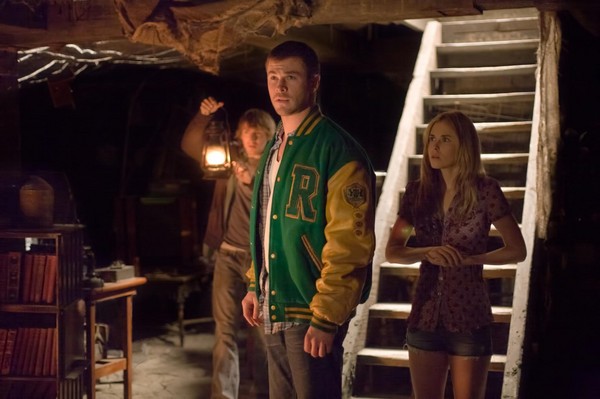
10. The Cabin In The Woods
For a movie chock-full of twists, perhaps the biggest is that despite all appearances to the contrary, The Cabin in the Woods is a heartfelt love story. Mind you, not between any of the young and pretty college students who tempt fate at the cabin in question. No, this romance is between creators Joss Whedon and Drew Goddard, and the scary-movie genre as a whole. A ménage à terror, if you will. Like Scream before it, the film is a simultaneous dissection and celebration of all the tropes to which it pays homage, while also managing to be a superb example of the genre in its own right. The script is vintage Whedon—smart, funny and surprising. Thanks to Goddard’s direction and staging, and despite the film’s very focus on the formulaic nature of horror, it still manages to be tense, atmospheric and jump-out-of-your-seat scary. The fun of discovery is just as much in play as all the blood and slime. Shot three years ago, the sight of a slighter, pre-Thor Chris Hemsworth as one of the students in peril already looks a little dated. The rest of the students are basically there as eye candy and cannon fodder, as is only proper, but they all commit to the material extremely well. Make no mistake: This isn’t The Tree of Life. It’s a schlocky little horror movie. But with such loving attention to detail and fun, The Cabin in the Woods may very well be the ultimate schlocky little horror movie. It’s just too bad that no machine yet exists to take you back 100 minutes so that you can experience it again for the first time. —Dan Kaufman
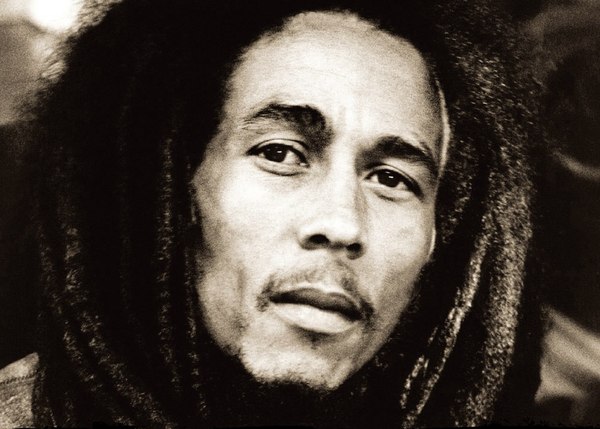
9. Marley
It’s not entirely clear why director Kevin Macdonald decided to make a documentary about the musician Bob Marley, a cultural icon whose life has been recounted countless times through a variety of mediums. Whatever his reasons, he’s clearly up to the task. Marley offers an expansive and at times fascinating perspective on the man through interviews with his fellow former Wailers, family, and childhood friends. The film is fairly detailed concerning Marley’s songwriting and musicianship from his early ska days up through the release of Catch a Fire. After this, however, it skips through his catalogue, choosing to focus more on his personal life, conversion to Rastafarianism, the tumultuous state of Jamaican politics, and his prolific womanizing—all of which are important elements of the artist’s character. This makes for an interesting journey, although music geeks will surely miss the behind-the-scenes insight about classic albums and songs that might have appeared. Marley, which is beautifully shot for a documentary (the Jamaican locations help immensely), begins not in the Caribbean, but in West Africa. This fades into live footage from the 1970s of Marley performing the song “Exodus.” Vintage concert performances are peppered liberally throughout the film, showcasing Marley as a whirling dervish of spinning, sweaty dreadlocks, possessed of an energy that feels boundless. Marley’s personal life was tumultuous, to say the least, and the film’s interviewees are happy to talk about it. Just when it seemed that he was poised to crack the elusive black American audience he so desired, he was stricken with cancer. When its a story of someone as profoundly interesting and influential as Bob Marley, there’s just so much things to say. —Jonah Flicker
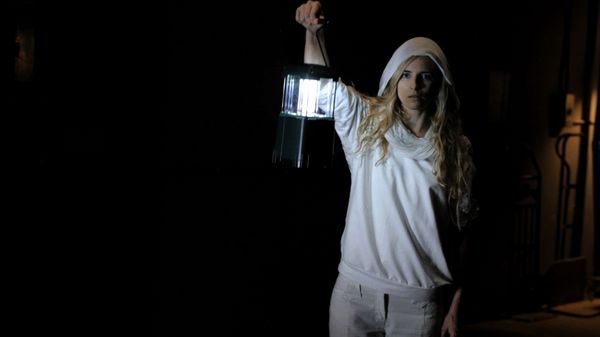
8. Sound of My Voice
The first ten minutes of Sound of My Voice are some of the most claustrophobic, dread-filled moments to grace American cinema in years. With no preamble, we follow a young couple as they voluntarily submit to an ominous set of late-night rituals beginning with handing over their valuables and allowing themselves to be handcuffed and blindfolded, and culminating in an elaborate secret handshake and meeting with a mysterious leader in a basement somewhere in the San Fernando Valley. We quickly learn that the stranger, Maggie, claims to be a traveler from the future who has returned to collect a chosen few followers, whom she will lead to a “safe place.” The young couple, Lorna and Peter, are aspiring documentarians and have infiltrated Maggie’s sect to expose her as a fraud and cult leader. Co-written by director Zal Batmanglij and Brit Marling (who plays Maggie), Sound of My Voice relentlessly simmers and threatens to boil over at any moment. Peter, who blames his mother’s death on a New Age cult, begins as a fierce opponent to the entire idea of Maggie’s group. Slowly, she breaks through his armor with both intimidation and seduction. Lorna’s relationship to the group and to Peter grows strained as things get weirder and weirder. Why is Maggie collecting blood from her followers? How does she know Peter teaches at a girls’ school and where did she obtain that yearbook? Does she suspect Peter and Lorna plan to sabotage her? The filmmakers refuse to feed us answers just as they refuse us explanations. Marling’s Maggie is a twisted messiah whom, most frightening of all, we can never completely damn. As a result, this intellectual thriller shot on a shoestring budget outshines any mega-budget summer offering and provides striking proof that independent cinema is alive and well. —Clay Steakley
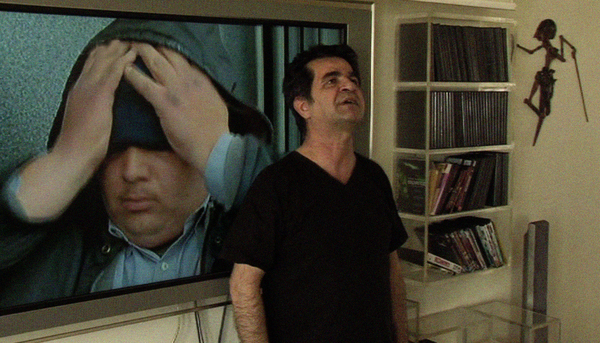
7. This is Not A Film
In December 2010, renowned Iranian director Jafar Panahi (Offside) was sentenced to six years in prison and banned from making films for 20 years. His crime? Supporting the opposition party during Iran’s highly charged 2009 election. Alone in his apartment, Panahi turns on a camera. What follows is a document of the day-to-day life of a man under house arrest: He spreads jam on bread. He brews tea. He feeds his daughter’s pet iguana. He calls his family. He checks in with his lawyer. But it also evolves into a provocative meditation on the nature of filmmaking itself: Although he has been barred from directing films, writing screenplays, leaving the country and conducting interviews, Panahi’s sentence says nothing about reading or acting, so this is what he does, explaining what his most recent film would have been about had he been allowed to make it. His friend Mojtaba Mirtahmasb, arrives to follow him around the apartment with a camera in lieu of the static shots. Panahi acts out his unmade script, about a young woman whose conservative parents lock her in her bedroom. The parallels between filmmaker and character are uncanny. Meanwhile, outside, a nervous energy gathers in the streets as New Years fireworks boom like bombs and armed officers patrol the neighborhoods. Over and over, Panahi’s friends and family tell him, “Don’t get worried,” which suggests they know that he will, and likely with reason. This Is Not a Film is a snapshot of a filmmaker in exile, yes, but also a poignant portrait of a country under a repressive regime and a compelling manifesto on the perseverance of art. Like René Magritte’s The Treachery of Images, in which the artist scrawls the words “This is not a pipe” under a painting of just such a smoking device, this is not a film but a representation of one. —Annlee Ellingson
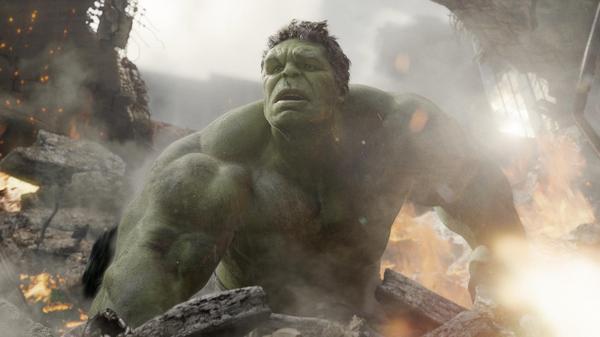
6. The Avengers
Too often, a superhero film is an exercise in missing the point. Fortunately for both casual movie-goer and comic book aficionado alike, Joss Whedon gets it. As a result, The Avengers not only stands out as one of the best efforts in the modern era of “super” movies, it also represents the most complete manifestation of the superhero team aesthetic yet seen on film. As for the plot—it’s the stuff of which basic, dependable comic book arcs are made. Thor’s mischievous half-brother, Loki (Tom Hiddleston), gets his hands on the Tesseract and promises some good-ol’-fashioned world conquering by means an alien army. Nick Fury (Samuel L. Jackson) gathers the most powerful folks he knows to fight the threat. While Whedon smartly recognizes how key Downey Jr.’s Stark is to the story, he also allows most all of his cast, heroes and villain, ample opportunities to shine, both in dialogue and action. (Hawkeye and Nick Fury, not so much.) It can’t be overstated how crucial such balance is to a team film. As Loki, Hiddleston may be the best-cast arch-villain since Ian McKellen’s Magneto. But The Avengers’s impending blockbusting will not just be the result of stellar casting. Throughout the film, Whedon allows much of the action to proceed at superhero pace—“placing” the camera for best vantage rather than over-indulging in bullet-time and other tricks. Finally, a director who gets the point instead of misses it—and a studio that is smart enough to hand him the reins. —Michael Burgin

5. Once Upon A Time in Anatolia
Once Upon a Time in Anatolia, co-written and directed by Nuri Bilge Ceylan, is a Turkish police procedural based on the real-life experiences of one of the writers. The story follows a group of men as they travel around the Anatolian steppe at night in three cars in search of a buried body. The main homicide suspect, Kenan (Firat Tanis), is being escorted from one location to the next as part of a deal he’s made with police Commissar Naci (Yilmaz Erdogan) to identify the grave of the man he murdered. They are accompanied on this overnight search by police officers, grave diggers, gendarmerie, as well as Prosecutor Nusret (Taner Birsel), and Doctor Cemal (Muhammet Uzuner). Nusret and Cemal each prove bastions of cynical, yet humane, reason in the face of Naci’s explosive temper and Kenan’s inexplicable brutality. Every character in this film has a story that they repeat over and over. Despite these repeated tellings, no real truth ever fully comes to light, for no story in this film is fixed—each is constantly changing and adapting. Once Upon a Time In Anatolia insists that no matter how large or small they may be, these lies, these changing stories, are a necessity in order to deal with life and carry on. Among this multitude of stories, many parts of the film are left unexplained, or intentionally vague. Instead of making the film feel incomplete, these unanswered questions instead suggest the complexity and endless nuances of humanity and the story that is being told here. By the end of the two and a half hours, the viewer has become thoroughly involved in everything that’s happened and cannot help but begin to construct his or her own story of the events and how they took place. As a result, the viewer becomes just as guilty as the characters of justifying and rationalizing a story that refuses to be clarified and categorized so simply. —Emily Kirkpatrick

4. Monsieur Lazhar
Director Philippe Falardeau’s new film, Monsieur Lazhar, presents various lives with seemingly few similarities forced to deal with tragedy in ways that are remarkably and movingly similar. At a French-Canadian school in Montreal, a teacher has just committed suicide in a classroom, traumatizing her highly impressionable and innocent students. Into her place steps Monsieur Lazhar, an Algerian immigrant who is recovering from an unspeakable personal calamity in his own recent past. Such a meeting of two disparate worlds, especially in a classroom setting, has been played out time and time again in film, often in the most clichéd manner. But Monsieur Lazhar is the exception to the rule. The acting is stellar throughout the film, from the one-named Algerian actor Fellag’s subtle and warm portrayal of the title character, to the cast of precocious children who make up his classroom. “The classroom is not a place where you infect a whole with despair,” Lazhar says at one point in the film, speaking to both the previous teacher’s classroom suicide and another teacher’s urging him to tell his students more about his story prior to coming to Montreal. Monsieur Lazhar is a thoroughly engaging film that goes far beyond the average classroom drama in emotion and storytelling. —Jonah Flicker

3. The Kid With a Bike
The Kid with a Bike continues the Belgian writing-directing brothers Jean-Pierre and Luc Dardenne’s extraordinary run of charting the lives of European down-and-outers navigating difficult moral and spiritual terrain. The Dardennes’ latest follows 11-year-old Cyril (Thomas Doret) as he struggles to reconcile with the fact that his father, Guy (Jérémie Renier), has abandoned him. In shock and denial, Cyril, with the aid of Samantha (Cécile de France), a neighborhood hairdresser, tracks down his bicycle, which Guy had secretly sold for much-needed cash before his departure. The two also locate Guy himself, leading to a wrenching reunion that ends with the father literally shutting the door in his son’s face. Samantha’s show of concern draws Cyril to her, and she welcomes him into her home as her foster son. Full of confusion and self-loathing after his father’s rejection, Cyril is prone to disobedience, defying Samantha’s efforts to create a sense of structure and belonging for the boy. Cyril’s inevitable mix-up with a local hood, Wes (Egon Di Mateo), initiates a downward spiral into crime and retaliation that threatens any prospect for better days ahead for the wounded Cyril and the devoted Samantha. As with all of the Dardennes’ films, the above events proceed naturally as a chain of causes and effects. Theirs is a cinema of keenly observed sociology, always interested in man’s capacity to prevail despite terrible socioeconomic odds and psychological trauma. As portrait of a young boy’s resilience and of compassion shown by one human being towards another, The Kid with a Bike is part of the grand tradition of humanist realism. —Jay Antani

2. Moonrise Kingdom
After seven features, a Wes Anderson production is unmistakable: white, upper-middle-class dysfunctional families deadpanning wry dialogue amid meticulous mise-en-scène to an eclectic soundtrack. Also: exquisite, often centered, shot compositions; uninterrupted lateral tracking camerawork through dollhouse-like sets; and inserts of quasi-obscure cultural objects. The auteur’s calculated quality persists in his latest film as well, but where his past work can come off as chilly and detached, Moonrise Kingdom exudes a warmth and innocence generated by the earnest adolescent romance at its core. The year is 1965, and the sleepy New England island of New Penzance is stirred to action when Khaki Scout Sam Shakusky (Jared Gilman) and local resident Suzy Bishop (Kara Hayward) run away together. Sam’s fellow Scouts dislike him, and his foster parents don’t want him back. By the time we catch up with him, he certainly looks the part of an “emotionally disturbed” orphan: slight of frame with heavy black glasses, a coonskin cap and a shadow on his upper lip, his uniform plastered with merit badges, both official and homemade. But Sam is full of surprises: He’s a quite skilled outdoorsman, and when he reunites with the mod girl with whom he’s been exchanging letters for a year, he matter-of-factly hands her a bouquet of wildflowers and begins imparting survival tips. Likewise, Suzy is an unexpected rebel with a volatile streak that upsets the balance among her lawyer parents (Bill Murray and Frances McDormand) and three little brothers. Delightfully, Anderson and co-writer Roman Coppola avoid clichés at every opportunity. The forces that would typically work to tear Sam and Suzy apart instead rally behind them, perhaps infected by the conviction of their love, which never wavers, even in argument: “I love you, but you don’t know what you’re talking about.”
Moonrise Kingdom is whimsical and, yes, precious, but only in the very best sense of the word. —Annlee Ellingson
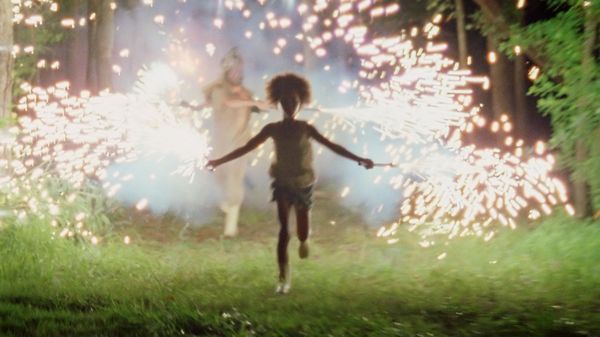
1. Beasts of The Southern Wild
Briefly describing Beasts of the Southern Wild is like trying to explain the inner-workings of an airplane to someone who’s never seen a wheel. In his feature debut, director Benh Zeitlin has stirred up a magic pot of poetry, neo-realism, surrealism, pre-historic creatures, the ice age, childhood and lost cultures. The film is a symphony of curiosity that builds toward a glorious crescendo. It’s set on an island known as “The Bathtub,” located outside the Louisiana levees. It’s a forbidden land — off-limits according to the government — but misfits still inhabit it, living in makeshift shelters and using vehicles that would be at home in a post-apocalyptic world. If Zeitlin’s sheer ambition weren’t enough, the film’s young star and narrator, Quvenzhané Wallis, was born with a magnetic screen presence. Six-year-old Wallis injects Beasts with youthful verve. The story is told through her character’s curious eyes, and she emits so much lovable hope that it’s impossible not to follow her. —Jeremy Matthews